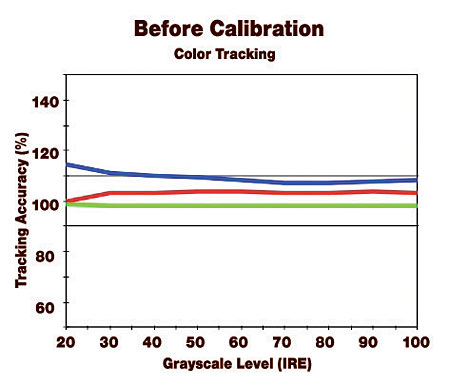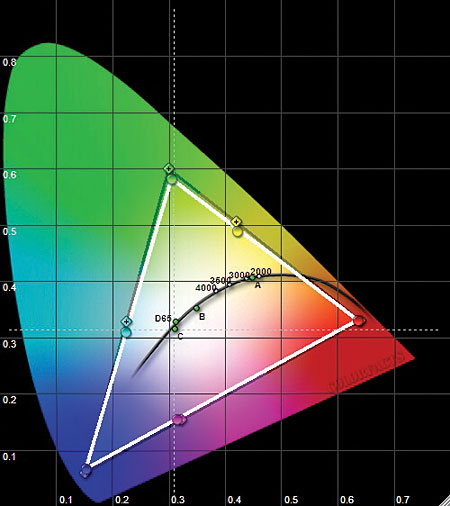Pioneer KURO PRO-150FD Plasma HDTV HT Labs Measures
Contrast Ratio: Full-On/Full Off 44,160:1
All of the measurements were taken in the Pure mode, adjusted for the most accurate picture. The Power Save mode was set to Off. Using a window pattern, I measured a peak contrast ratio of 44,160:1 (that’s not a typo) with an astonishing black level of 0.001 foot-lamberts—the minimum sensitivity of our lab-grade Minolta light meter. Even the full-screen white contrast ratio measured 18,220:1 (18.22 ft-L peak white, 0.001 ft-L video black). All plasmas dim their output, to remain within the capabilities of their power supplies, as the average picture brightness level increases. This dimming is not apparent to the eye. In comparison, the window-pattern contrast ratio of the PDP-6010 (Pioneer’s non-Elite 60-inch model reviewed at UltimateAVmag.com) measured 9,295:1 (37.18 ft-L peak white, 0.004 ft-L video black).


Even without the use of the ISF CCC setup feature, the PRO-150FD calibrated extremely well. The Color Tracking charts above show how closely a display adheres to the D65 standard white point; the tighter the overlap of the three primary colors, the better the result. The pre-calibration result is for the Mid-Low Color Temp setting. Post calibration, the result deviates from nearly perfect compliance only at the darkest end of the brightness range, below 30 IRE.

In addition, the white triangle in the pie-shaped CIE chart, above, shows the set’s color space in the Color Space 2 setting (Pure mode). It’s very close to the ATSC color standard (the black triangle), apart from a slightly desaturated green.
The Pioneer’s 480i-to-1080p upconversion of standard-def sources showed a mixed performance, with some jaggies on dedicated test patterns and an inconsistent lock on 3:2 pulldown. (The upconversion on Pioneer’s own DV-79AVi universal DVD player was superior on these tests.) But the set’s performance was acceptable on my standard assortment of real-world 480i test material. And it handled our HD deinterlacing tests (1080i-to-1080p), both film- and video-based, as flawlessly as any display I’ve tested.
The luma response was first class up to the limit of our resolution test patterns. But the chroma (color) response was more limited. At the highest burst frequency, the horizontal chroma resolution was satisfactory, but the vertical chroma resolution at the same maximum frequency was poor. This rolloff did not appear to affect the quality of the Pioneer’s color on real program sources.—TJN













































